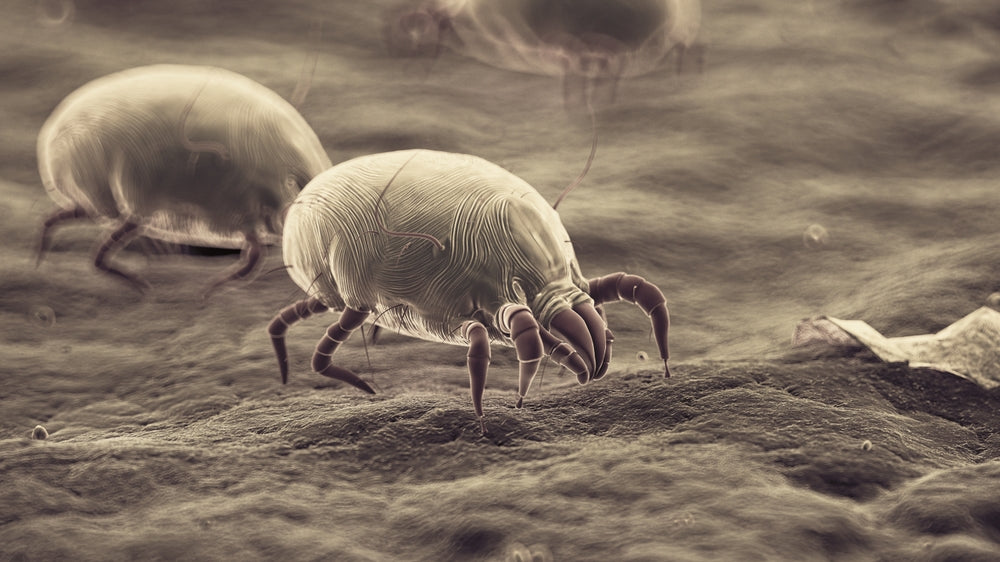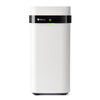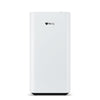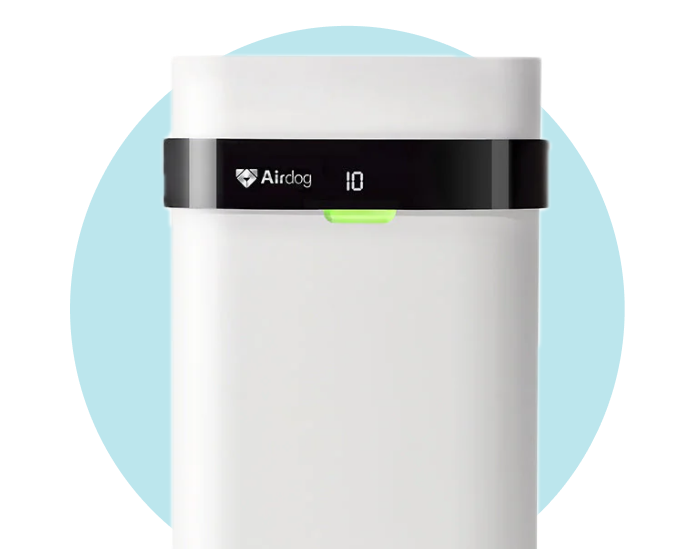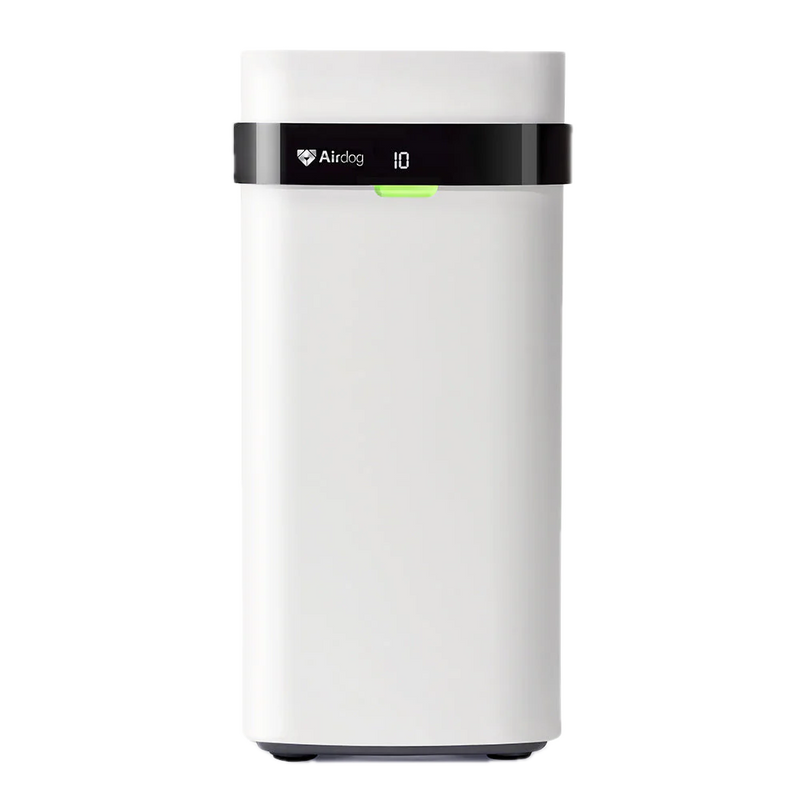Dust mites are tiny creatures that thrive in the warm, humid corners of our homes, feeding on skin flakes. The allergens they produce—from their droppings and body fragments—can trigger sneezing, itchy eyes, congestion, and even asthma attacks. With allergies on the rise, many homeowners are asking: do air purifiers help with dust mites?
The answer is yes—air purifiers can reduce airborne dust mite allergens, improving indoor air quality and easing allergy symptoms. However, they are most effective when combined with strategies like cleaning, humidity control, and allergen-proof bedding.
How Dust Mites Affect Your Home
Dust mites live mostly in mattresses, carpets, and upholstered furniture, thriving in temperatures between 68–77°F and humidity above 70%. A single female dust mite can lay up to 80 eggs, leading to rapid population growth if conditions remain favorable.
Their waste and body fragments are potent allergens, causing symptoms ranging from mild sneezing and itchy eyes to more severe asthma reactions. Reducing exposure is essential for anyone with allergies, and understanding their habitat and habits helps inform effective strategies:
-
Humidity control: Keeping indoor humidity below 50% helps slow dust mite reproduction.
-
Cleaning routines: Vacuuming regularly with HEPA-equipped vacuums and washing bedding in hot water (130°F or higher) removes allergens at the source.
-
Allergen-proof covers: Encasing mattresses, pillows, and box springs prevents dust mites from penetrating bedding.
How Air Purifiers Handle Dust Mites
Air purifiers remove airborne particles, including dust mite allergens, from your indoor environment. While they don’t kill dust mites directly, they reduce the allergens that cause reactions.
Air Filtration Process
Air purifiers work by drawing in air, filtering out particles, and circulating cleaner air back into the room. Key benefits include:
-
Particle Capture: Filters trap dust mite allergens along with pollen, pet dander, and other common indoor allergens.
-
Air Circulation: Continuous filtration helps maintain a lower level of airborne allergens throughout your home.
-
Symptom Relief: Reducing airborne allergens can help decrease sneezing, congestion, and asthma flare-ups, improving comfort for allergy sufferers.
Practical Tips for Reducing Dust Mites
Air purifiers are an important tool, but combining them with other strategies makes the biggest impact. Here is some actionable advice that can significantly lower dust mite counts in your home, leading to a healthier living environment, especially for those with dust mite allergies.
Dust-Mite-Proof Covers
-
Encase mattresses, pillows, and box springs to block dust mites.
-
Look for tightly woven fabrics with pores smaller than 10 microns.
Humidity Control
-
Keep indoor humidity below 50% to slow dust mite growth.
-
Use dehumidifiers and ventilate bathrooms and kitchens to reduce moisture.
Cleaning Practices
-
Vacuum with HEPA-equipped cleaners at least once a week.
-
Wash bedding in hot water (130°F / 54°C) weekly and dry thoroughly.
-
Focus cleaning on carpets, upholstered furniture, and other dust-prone areas.
Types of Air Purifiers and Their Effectiveness
While most people rely on HEPA filters as the standard for allergen removal, newer technologies can provide faster or more comprehensive results.
HEPA Filters
-
Capture 99.97% of particles 0.3 microns or larger, including dust mite allergens.
-
Require regular replacement to maintain efficiency.
-
Effective for general allergen reduction but limited to physical particle capture.
Advanced TPA Technology: Airdog
-
Uses TPA technology to capture and destroy ultrafine particles more efficiently.
-
Reduces the overall concentration of dust, which can also help to control dust mite populations.
-
Features low-maintenance, long-lasting filters
Selecting the Right Air Purifier
To maximize the benefits of an air purifier for dust mites:
-
Match Room Size: Ensure the purifier is rated for the room you plan to use it in.
-
Filter Type: Choose filters designed to capture fine allergens—HEPA is standard, advanced options like Airdog go further.
-
Features: Look for air quality sensors, multiple fan speeds, and quiet operation for convenience.
-
Placement: Position centrally or near areas where you spend the most time for optimal circulation.
Integrating Air Purifiers into a Comprehensive Allergy Strategy
While air purifiers reduce airborne dust mite allergens, their full impact is realized when combined with smart home practices. Managing humidity, maintaining clean surfaces, and using allergen-proof bedding all complement filtration, creating an environment that minimizes allergen exposure.
Pairing these habits with a high-performance air purifier, like Airdog, ensures that the air you breathe is consistently cleaner, helping to reduce symptoms and improve overall indoor air quality.
Why Airdog Can Help
Yes, air purifiers help with dust mites by reducing airborne allergens that trigger reactions. While they don’t kill dust mites directly, they make indoor air more comfortable for allergy sufferers.
Airdog goes a step further with its advanced TPA technology, capturing and destroying even the smallest allergens efficiently and provisioning consistent performance over time.
Combined with cleaning, humidity control, and allergen-proof bedding, Airdog helps create a cleaner, healthier home, reducing dust mite allergens and improving overall air quality.

